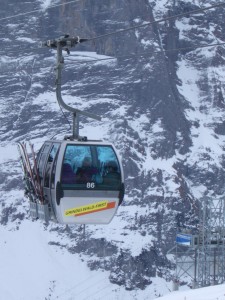 A proposed SFr 350m investment in upgrading the facilities in the Jungfrau region has hit opposition from environmentalists and local landowners according to Swissinfo.
A proposed SFr 350m investment in upgrading the facilities in the Jungfrau region has hit opposition from environmentalists and local landowners according to Swissinfo.
The proposals address concerns that the Jungfrau is losing ground against other international destinations, with the long travel times, lack of integration between the facilities in Murren and Wengen and fact that Grindelwald is not a ski-in, ski-out resort cited as areas to be addressed.
Greater infrastructure integration, a new freeride area, a new rail stop in the Grindelwald valley and a gondola to Kleine Scheidegg area are proposed. In addition a gondola across the Lauterbrunnen valley is mooted. There is also talk of other development including a bypass for Grindelwald to make it car free.
For sure, the Jungfrau is one of the most beautiful areas in the World and the rail network is quaint and pretty effective. However it is also clear that a gap is starting to emerge between leading winter sports resorts, with the ones making investments doing well and those not doing so, or having limited facilities, falling behind. The Jungfrau suffers from not having the length of season of some of the other major resorts in Europe, but it has a unique place in the development of winter sports and fabulous variety. Getting the balance right will be a tough challenge, and the outcome is likely to be a compromise. I certainly think attempts to increase the challenge for more experienced skiers and snowboarders off First and Mannlichen would be good, making Grindelwald car-free would be excellent, and reducing the journey time from Bern is always going to be popular. However, people who know the area realize that the challenging runs are off the Schilthorn and that beginners and intermediates will find plenty to occupy them around Wengen, Kleine Scheidegg , Mannlichen and First (an unexpected gem for those who always head the other way). Personally I find it an easy day trip from Basel, and probably one of the best places to head to for weekenders from Northern Europe, probably more so than Chamonix. I feel that there is room for improvement, but the resort is far better marketed in summer than winter, and a clearer winter marketing strategy (coupled with infrastructure improvements) will go further than extensive investment.
